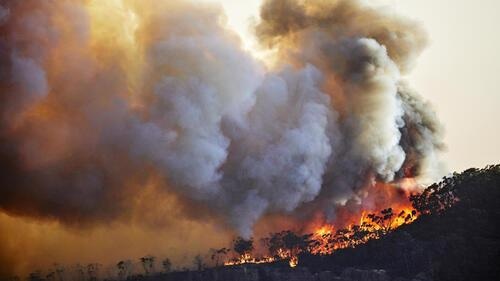According to a new study, wildfire smoke depletes the ozone layer. Researchers warn that as the frequency of major fires increases as a result of climate change, more harmful ultraviolet radiation from the sun will reach the ground.

Image Credit: University of Waterloo.
At the University of Waterloo, atmospheric chemists have discovered that smoke caused by the Australian wildfires of 2019 and 2020 ruined atmospheric ozone in the Southern Hemisphere for months. The ozone shield is considered a part of the stratosphere layer of the Earth’s atmosphere that absorbs UV rays coming from the sun.
The scientists utilized data obtained from the Canadian Space Agency’s Atmospheric Chemistry Experiment (ACE) satellite to quantify the effects of smoke particles in the stratosphere. The study outcomes are reported in the Science journal.
The Australian fires injected acidic smoke particles into the stratosphere, disrupting the chlorine, hydrogen, and nitrogen chemistry that regulate ozone. This is the first large measurement of the smoke, which shows it converting these ozone-regulating compounds into more reactive compounds that destroy ozone.
Peter Bernath, Study Lead Author and Research Professor, Department of Chemistry, University of Waterloo
Just like the holes over Polar Regions, this harm is a temporary effect, and the ozone levels got back to the pre-wildfire levels as soon as the smoke vanished from the stratosphere. However, an increase in the prevalence of wildfires would imply that the destruction takes place more frequently.
The ACE satellite is a unique mission with over 18 continuous years of data on atmospheric composition. ACE measures a large collection of molecules to give a better, more complete picture of what is happening in our atmosphere. Models can’t reproduce atmospheric smoke chemistry yet, so our measurements provide a unique look at chemistry not seen before.
Peter Bernath, Study Lead Author and Research Professor, Department of Chemistry, University of Waterloo
The operations of the ACE satellite are based at the University of Waterloo, and Bernath is the lead mission scientist.
Journal Reference:
Bernath, P., et al. (2022) Wildfire smoke destroys stratospheric ozone. Science. https://doi.org/10.1126/science.abm5611